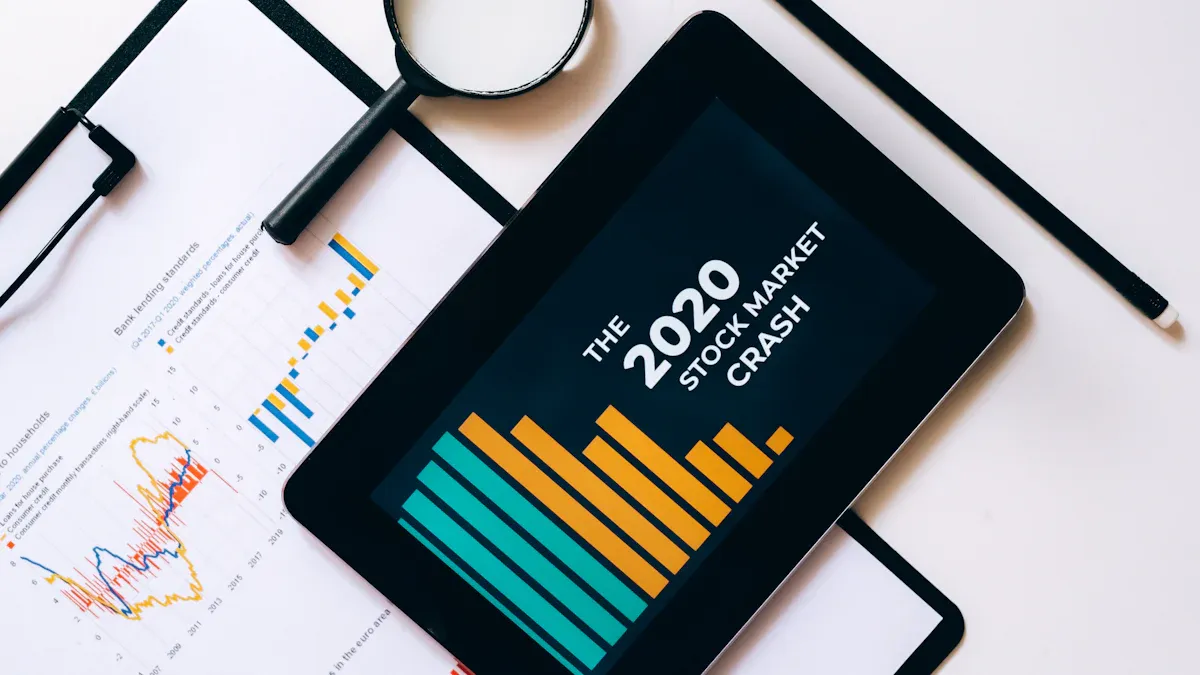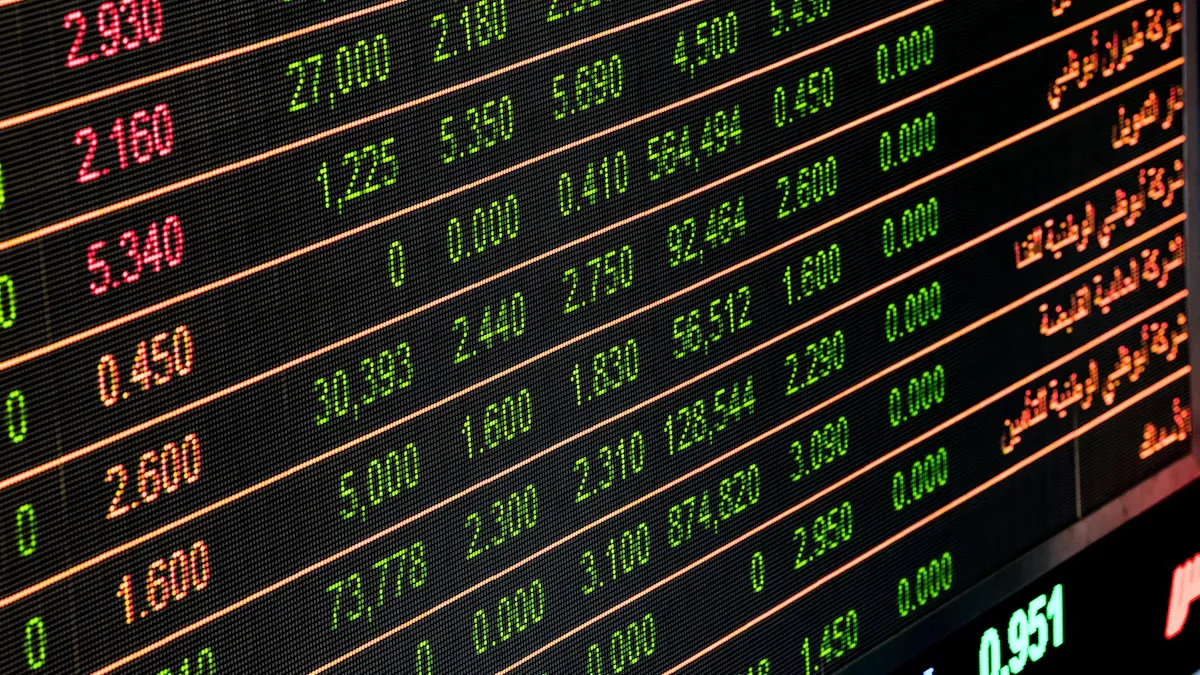- EasyCard
- Trade
- Help
- Announcement
- Academy
- SWIFT Code
- Iban Number
- Referral
- Customer Service
- Blog
- Creator
How US ADRs Influence Global Investors’ Asset Allocation

Image Source: pexels
What are US ADRs? They are the abbreviation for American Depositary Receipts, used to help non-US companies list and trade on US securities markets. This financial instrument allows global investors to purchase foreign companies’ stocks in US dollars, simplifying the cross-border investment process and enhancing market liquidity. In recent years, the performance of Chinese ADRs has been particularly notable. During the subprime crisis, Chinese ADRs rose against the trend, demonstrating their importance in global asset allocation. This phenomenon reflects investors’ confidence in the Chinese economy while also highlighting the unique role of US ADRs in market volatility.
The market performance, policy changes, and asset allocation strategies of US ADRs have had a profound impact on global investors. They not only provide diversified investment opportunities but also transform investors’ risk management approaches. By analyzing these factors, investors can better understand how US ADRs influence their asset allocation decisions.
Key Points
- US ADRs provide global investors with diversified investment opportunities, simplifying the cross-border investment process.
- Policy changes significantly impact the US ADR market, and investors need to closely monitor macroeconomic and industry dynamics.
- US ADRs help investors manage risks, reduce reliance on single markets, and optimize asset allocation.
- Investors should select ADRs from high-growth industries to maximize returns while focusing on dividend yields.
- Timely adjustment of investment strategies to address market volatility can seize potential investment opportunities.
Market Performance and Global Impact of US ADRs

Image Source: pexels
Volatility of US ADRs and Its Driving Factors
The volatility of the US ADR market is typically driven by multiple factors, including the global economic environment, corporate fundamentals, and investor sentiment. On April 4, 2024, the US stock market experienced significant volatility, with the S&P 500 index falling 5.97% in a single day, marking its largest daily decline since March 2020. The Nasdaq index fell 5.82%, with a cumulative decline of 22% from its historical high in December 2024, entering a technical bear market. The Dow Jones index also dropped 5.50%, its largest single-day decline since 2020. Technology stocks performed particularly weakly, with Apple’s stock falling 7%, NVIDIA dropping 7%, and Tesla plummeting 10%.
These data indicate that the volatility of the US ADR market reflects not only changes in the US domestic market but also the influence of global economic and policy environments. For example, geopolitical risks, fluctuations in the US dollar exchange rate, and changes in international trade policies can directly or indirectly impact the performance of US ADRs. Investors need to closely monitor these driving factors to better manage investment risks.
Impact of Federal Reserve Policy and Corporate Earnings on the ADR Market
The Federal Reserve’s monetary policy has a particularly significant impact on the US ADR market. Changes in interest rates directly affect corporate financing costs and profitability, indirectly influencing ADR market performance. Below is data on interest rate changes and their impact on corporate earnings in recent years:
| Period | Interest Rate Change | Impact on Corporate Earnings |
|---|---|---|
| 2022 | Rate hikes of 425 basis points | Rising corporate costs, squeezed profit margins |
| 2023-2024 | High interest rate environment | Improved corporate earnings, strengthening S&P 500 index |
The 2022 rate-hiking cycle led to increased corporate financing costs and squeezed profit margins, putting pressure on many ADRs’ stock prices. However, as companies gradually adapted to the high interest rate environment, corporate profitability improved between 2023 and 2024, and the S&P 500 index strengthened accordingly. This trend indicates that the impact of Federal Reserve policy changes on the ADR market has a lagged effect, and investors need to adjust asset allocation strategies based on these policy shifts.
How ADR Market Performance Influences Global Investor Sentiment and Expectations
The performance of the ADR market not only affects investors’ asset returns but also has a profound impact on global investor sentiment and expectations. Studies show that the investor sentiment index can be validated through quantitative indicators. This index combines multiple publicly traded market indicators, demonstrating strong predictive power, particularly in signaling buy and sell opportunities at market turning points. Additionally, the seasonal patterns of the sentiment index and performance differences under varying sentiment conditions further validate this.
When the ADR market performs strongly, investors’ risk appetite typically increases, leading to more capital flowing into high-risk asset classes. Conversely, when market performance is weak, investors tend to shift toward safe-haven assets like gold or bonds. These sentiment shifts not only influence individual investors’ decisions but also trigger chain reactions in global capital flows.
Policy and Regulation Impacts on US ADRs
Direct Impact of Policy Changes (e.g., Rate Hikes, Delistings) on US ADRs
Policy changes significantly impact the US ADR market. Rate hikes typically increase corporate financing costs, weaken profitability, and lead to declines in ADR prices. Delisting policies may directly reduce the number of ADRs available in the market, affecting investors’ options. Data shows significant changes in the number of convertible bonds redeemed early or at maturity in recent years:
In 2019, there were 20 convertible bonds that exited. Among them, 19 convertible bonds exited via the early redemption method that year, accounting for 95%; by 2023, due to the weakening of some underlying stocks, the issuers of convertible bonds did not actively lower the conversion price or gave up the mandatory redemption. The proportion of convertible bonds exiting via early redemption that year dropped to 70.69%; since 2024, as of May 30, there have been 16 convertible bonds exiting via early redemption, and there have also been 11 convertible bonds exiting via maturity redemption. The proportion of convertible bonds exiting via the early redemption method has dropped significantly to 57.14%.
These data indicate that policy changes affect not only market liquidity but also investors’ risk assessments of US ADRs. Investors need to adjust asset allocation strategies based on policies to address potential market volatility.
Case Study on Chinese ADR Delistings
The delisting of Chinese ADRs has had a particularly significant impact on the US ADR market. Between mid-2021 and mid-2022, a large number of Chinese ADRs delisted from the US market and shifted to the Hong Kong market. This process led to a decline in US market trading share and a significant increase in Hong Kong market trading share:
| Event Node | US Market Trading Share Change | Hong Kong Market Trading Share Change | Fund Holding Conversion |
|---|---|---|---|
| Mid-2021 to Mid-2022 | 34% fund share conversion | 46.2% US market value converted to Hong Kong | 80.9% passive fund reallocation share |
This phenomenon reflects the profound impact of policy changes on global capital flows. The conversion of fund holdings not only altered market structures but also influenced investors’ asset allocation strategies. Investors need to monitor delisting policy dynamics to adjust their portfolios in a timely manner.
How Policy Changes Alter Investors’ Asset Allocation Strategies
Policy changes often prompt investors to reassess their asset allocation strategies. Data shows that following policy adjustments, investors’ demand for global allocation has significantly increased:
- QDII funds and equity funds have grown by over 30%, indicating increased investor demand for global allocation.
- Simultaneous growth in money market funds, bond funds, and equity funds suggests investors are seeking a balance between returns and risks in diversified allocation.
- The simultaneous growth in the scale of these three fund types reflects enhanced market confidence, with investors actively participating in the market.
These trends indicate that investors tend to adopt more diversified asset allocation strategies in response to policy changes to reduce risks and optimize returns. What are US ADRs? As a cross-border investment tool, they play a significant role in this process, offering investors more options.
The Role of US ADRs in Asset Allocation

Image Source: pexels
How US ADRs Provide Diversified Investment Opportunities
What are US ADRs? They are a tool that connects global capital markets, providing investors with opportunities to access foreign companies. Through US ADRs, investors can purchase stocks of companies from China, India, and other countries in the US market. This approach not only simplifies the cross-border investment process but also lowers the investment threshold. Investors can participate in the growth of these companies without directly entering foreign markets.
The diversification of US ADRs is reflected in their industry and geographic distribution. For example, Chinese technology companies and Indian pharmaceutical firms have entered the US market through ADRs. This distribution offers investors more choices, helping them diversify risks across different economies. Additionally, ADRs allow investors to seek opportunities in dollar-denominated assets, mitigating risks from exchange rate fluctuations.
Investors can use US ADRs to build a global investment portfolio. By selecting ADRs from different countries and industries, investors can maintain asset stability across economic cycles while capitalizing on growth opportunities.
The Role of US ADRs in Risk Management
US ADRs play a significant role in risk management. They provide investors with a tool to hedge geopolitical risks. For example, when economic or policy uncertainty arises in a specific region, investors can reduce risks by adjusting their ADR holdings. US ADRs have high liquidity, allowing investors to buy and sell quickly to respond to market changes.
Additionally, US ADRs help investors diversify risks from single markets. When investors purchase ADRs in the US market, they are effectively investing in foreign companies. This cross-border investment approach reduces reliance on a single country’s economy. For instance, investors can hold ADRs from both Chinese and Indian companies to balance the performance of different economies.
Risk management also includes controlling exchange rate risks. US ADRs are denominated in US dollars, allowing investors to avoid exchange rate volatility risks associated with holding foreign currencies directly. This feature makes US ADRs a stable investment tool, particularly in times of increasing global economic uncertainty.
The Potential of US ADRs in Return Optimization
US ADRs not only excel in risk management but also have the potential to optimize returns. Many foreign companies gain higher market visibility and liquidity after entering the US market through ADRs. This often drives stock price increases, delivering higher returns to investors.
Investors can optimize returns by selecting ADRs from high-growth industries. For example, Chinese electric vehicle companies and Indian IT service firms have performed strongly in recent years. Their ADRs in the US market have attracted significant capital, with stock prices rising steadily, creating substantial returns for investors.
Moreover, US ADRs offer dividend yield opportunities. Many foreign companies pay dividends to investors through ADRs. This form of income not only increases investors’ cash flow but also enhances overall investment returns. By analyzing companies’ financial conditions and industry prospects, investors can select ADRs with long-term growth potential to maximize returns.
What are US ADRs? They are a tool that helps investors optimize returns, offering global investors more choices and opportunities.
US ADRs have a profound impact on global investors’ asset allocation. They provide diversified investment opportunities while playing a significant role in risk management and return optimization. In recent years, with changes in policy and market environments, investor interest in US ADRs has continued to rise. Below are some key trends and recommendations:
- Long-term asset allocation institutions are gradually shifting toward Hong Kong stocks, reflecting changes in US market liquidity and investor structures. UBS notes that Chinese ADRs face renewed pressure and stricter scrutiny, necessitating the search for new listing venues, particularly for companies without primary listings on Greater China exchanges.
- In the current market environment, policy changes significantly influence market sentiment and investment strategies. Investors need to monitor macroeconomic conditions, industry trends, and corporate performance. For example, the rapid development of the renewable energy sector may positively impact related companies.
- Risk control is critical in asset allocation. The table below shows asset allocation ratios under different risk parameters:
| Drift Parameter (mu) | Risk Parameter (sigma) | Average Risk Asset Allocation Ratio |
|---|---|---|
| 0.05 | 0.10 | 0.561 |
| 0.10 | 0.20 | 0.547 |
| 0.15 | 0.30 | 0.561 |
Investors should formulate reasonable investment strategies based on their risk tolerance. In short-term forecasting, the ARIMA model shows high applicability, but long-term forecasting requires comprehensive analysis of multiple factors.
Tip: Investors need to closely monitor policy changes and market dynamics, adjusting asset allocation strategies in a timely manner to address potential risks and seize market opportunities.
FAQ
What is the difference between US ADRs and common stocks?
US ADRs are depositary receipts issued by foreign companies in the US market, representing their stocks. Common stocks are directly issued by companies and traded in local markets. ADRs are denominated in US dollars, facilitating investment in foreign companies for US investors, while common stocks are typically denominated in local currencies.
What risks should investors consider when investing in US ADRs?
Investing in US ADRs requires attention to exchange rate fluctuations, policy changes, and market liquidity risks. Additionally, foreign companies may face different regulatory environments, affecting their financial performance. Investors should carefully study the target company’s fundamentals and market conditions.
Do US ADRs pay dividends?
Many US ADRs pay dividends, but the specific amount and frequency depend on the issuing company’s policies. Investors need to monitor company announcements and financial reports to understand dividend payment details. Dividends are typically paid in US dollars and may involve tax implications.
How to choose suitable US ADRs for investment?
Investors should select ADRs based on industry prospects, company financial conditions, and market performance. ADRs in high-growth industries like technology and renewable energy may offer higher returns. Diversifying investments across different countries and industries helps reduce risks.
Are the trading hours for US ADRs the same as for US stocks?
The trading hours for US ADRs align with the US stock market. Investors can buy and sell ADRs during regular trading hours in Eastern Time. Some brokers also offer pre-market and after-hours trading services, increasing trading flexibility.
U.S. ADRs open doors for global investors, enabling diversified portfolios to navigate market volatility and policy shifts with flexibility and stability. BiyaPay offers a seamless financial platform, allowing trading in U.S. and Hong Kong stocks without offshore accounts, empowering you to leverage USD, HKD, and other assets to seize high-growth ADR opportunities.
Supporting 30+ fiat and digital currencies with real-time exchange rate transparency, plus global remittances to 190+ countries with remittance fees as low as 0.5%, it helps investors maintain liquidity and manage risks effectively in volatile markets. A 5.48% annualized yield savings product with no lock-in period enhances flexibility. Sign up for BiyaPay today to combine ADR diversification with BiyaPay’s versatile tools for efficient, secure investments!
*This article is provided for general information purposes and does not constitute legal, tax or other professional advice from BiyaPay or its subsidiaries and its affiliates, and it is not intended as a substitute for obtaining advice from a financial advisor or any other professional.
We make no representations, warranties or warranties, express or implied, as to the accuracy, completeness or timeliness of the contents of this publication.




Contact Us
Company and Team
BiyaPay Products
Customer Services
BIYA GLOBAL LLC is a licensed entity registered with the U.S. Securities and Exchange Commission (SEC No.: 802-127417); a certified member of the Financial Industry Regulatory Authority (FINRA) (Central Registration Depository CRD No.: 325027); regulated by the Financial Industry Regulatory Authority (FINRA) and the U.S. Securities and Exchange Commission (SEC).
BIYA GLOBAL LLC is registered with the Financial Crimes Enforcement Network (FinCEN), an agency under the U.S. Department of the Treasury, as a Money Services Business (MSB), with registration number 31000218637349, and regulated by the Financial Crimes Enforcement Network (FinCEN).
BIYA GLOBAL LIMITED is a registered Financial Service Provider (FSP) in New Zealand, with registration number FSP1007221, and is also a registered member of the Financial Services Complaints Limited (FSCL), an independent dispute resolution scheme in New Zealand.




















